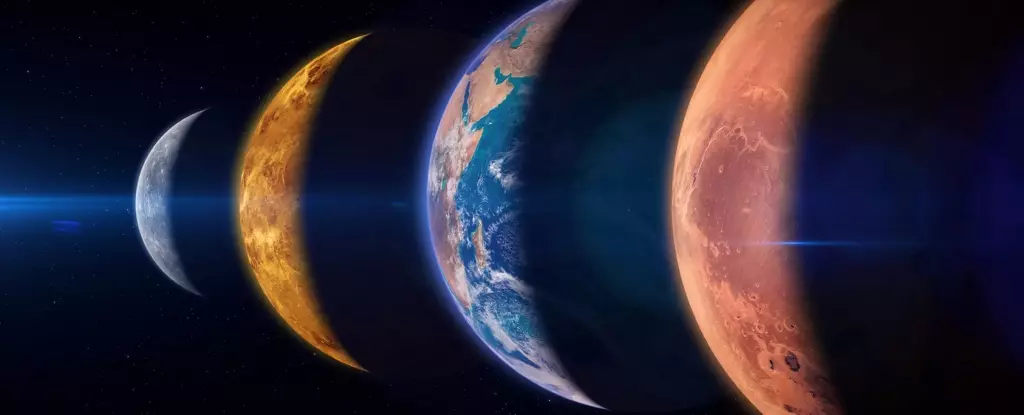In an extraordinary event that enthusiasts and astronomers around the globe are eagerly anticipating, the night of February 28, 2025, is set to become a monumental spectacle in our celestial backdrop. On this evening, all seven of the Solar System’s planets—Saturn, Mercury, Neptune, Venus, Uranus, Jupiter, and Mars—will line up in a striking display. This rare phenomenon, known as a ‘great planetary alignment,’ offers a unique opportunity to witness the majestic ensemble of our neighboring worlds.
While it’s not uncommon to spot a few planets sharing the same hemisphere of the sky, the occurrence of a grand assembly featuring all seven classical planets is exceptionally rare. These planetary alignments can range in size, with configurations of three to eight planets being categorized as alignments. When five or six planets come together, it’s termed a ‘large alignment,’ but true cohesion among seven planets is an occurrence that remains largely elusive.
It is vital to differentiate between what one might imagine from illustrations or diagrams that showcase planets in perfect linear sequences. The actual alignments experienced in our night sky are the results of angles and distances at play, rather than precision. The planets orbit the sun on a flat plane known as the ecliptic, creating the illusion of a linear arrangement from the vantage point of Earth. While certain orbits may tilt slightly above or below this orbital plane, the planets exhibit an overall tendency to align like parallel grooves etched into a cosmic record.
Understanding the background of these celestial bodies requires a glimpse into their formation. Stars emerge from revolving clouds of gas and dust, a process that shapes the ensuing material into a primarily flat, disk-like structure. This disk becomes the cradle for planetary formation. If left undisturbed by powerful gravitational forces from nearby celestial objects, newly formed planets maintain their relative positions along this flat plane.
Consequently, there are times when the planets position themselves on the same side of the sun throughout their elliptical orbits. The planetary spectacle that graces the evening sky on February 28 is a result of such cosmic mechanics at play, weaving together a celestial tapestry that captures our imaginations and prompts us to gaze upward.
Witnessing this celestial performance, however, requires some planning on the part of avid stargazers. Depending on geographic location, the visibility of certain planets and their order can vary significantly. Various tools exist to facilitate your viewing experience: websites like Time and Date offer interactive features that provide rise and set times for each celestial body, their positions in the sky, and insight into viewing difficulties based on your location.
Stellarium is another valuable resource, providing an online platform where users can discern the planetary positions relative to their observer point on Earth. For those who prefer mobile accessibility, the Sky Tonight app precisely tracks celestial objects in real-time, offering guidance based on the user’s geographic location. Utilizing these tools will significantly enhance your stargazing experience, making it easier to identify specific planets within the night sky.
To fully embrace the beauty of the planets on this momentous night, investing in a pair of binoculars or a telescope will provide a more detailed look at our celestial neighbors. Observing the texture of Jupiter’s stripes or the stunning rings of Saturn can transform a simple sighting into an empirical experience. For those who might be new to stargazing, researching beforehand will streamline the process and enrich your knowledge about the wonders of the universe.
As the cosmic alignment approaches, excitement builds not only for the breathtaking sight itself but also for the communal experience that comes from sharing this moment with fellow enthusiasts. Fingers crossed for clear skies; mark your calendars for this remarkable event that is sure to inspire wonder and curiosity about our magnificent world and beyond.


Leave a Reply